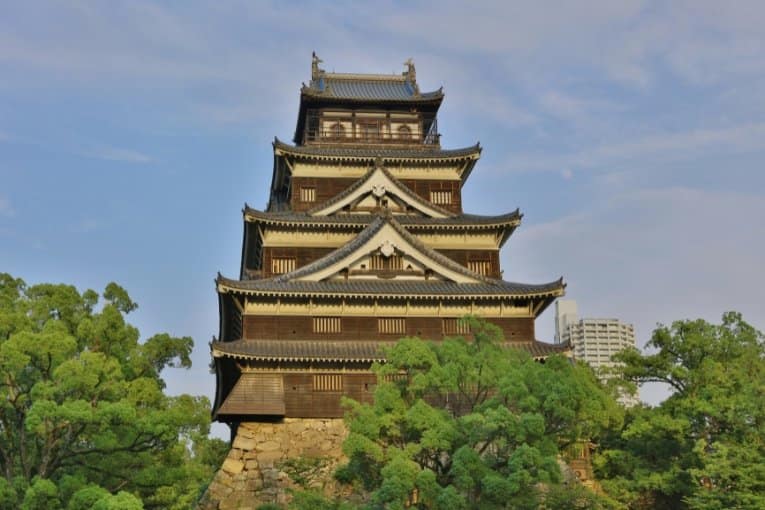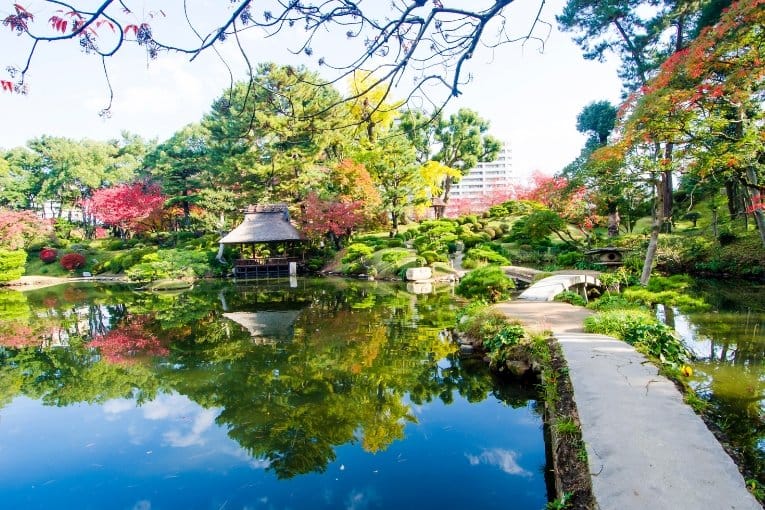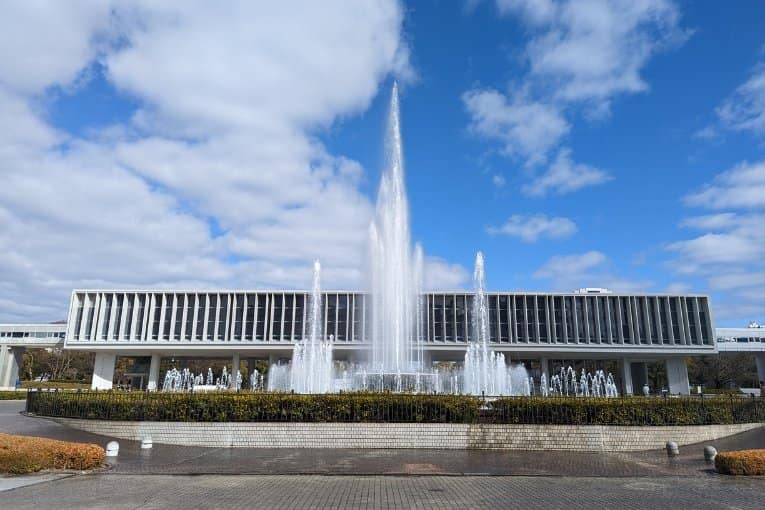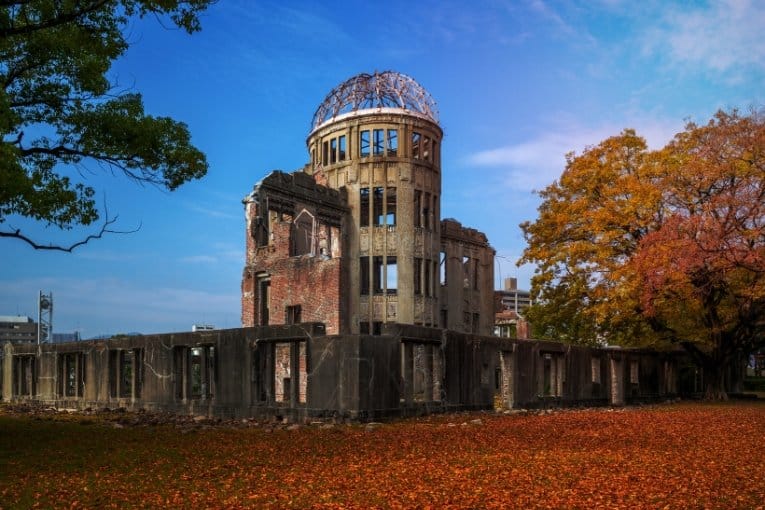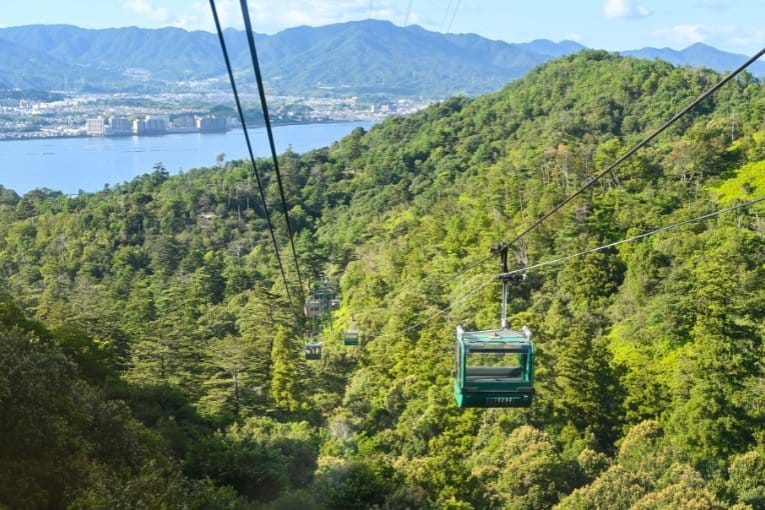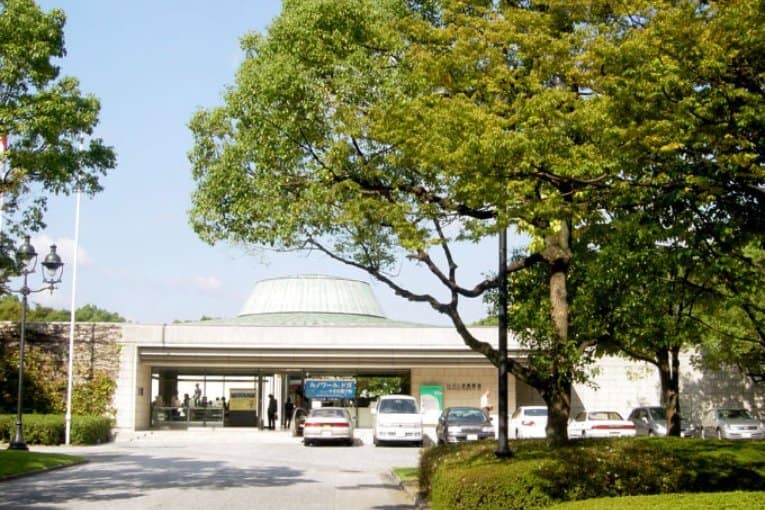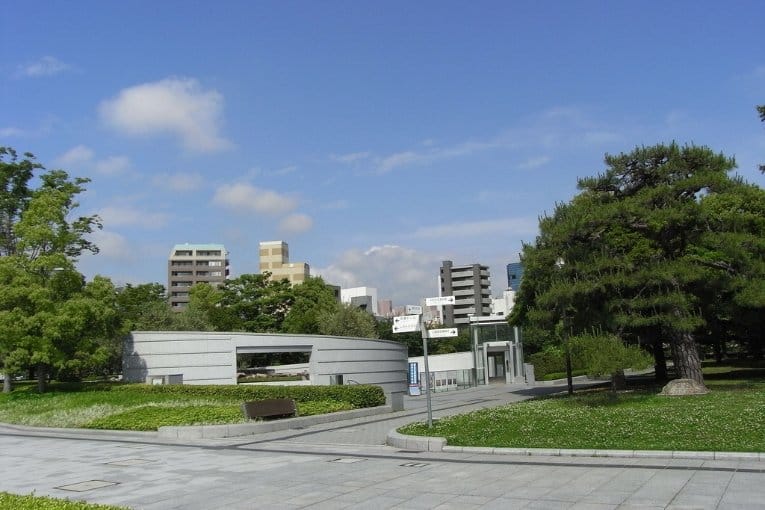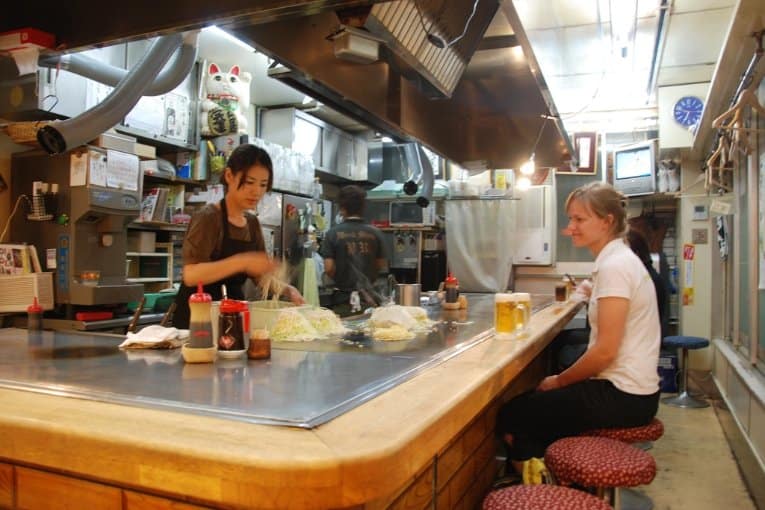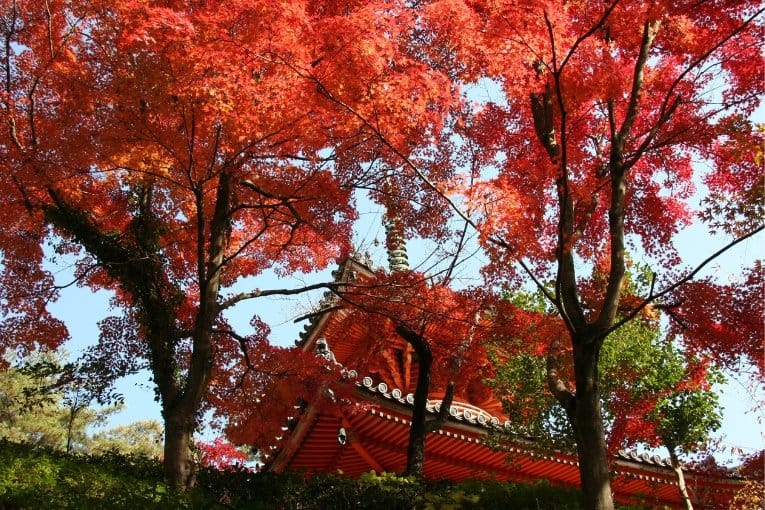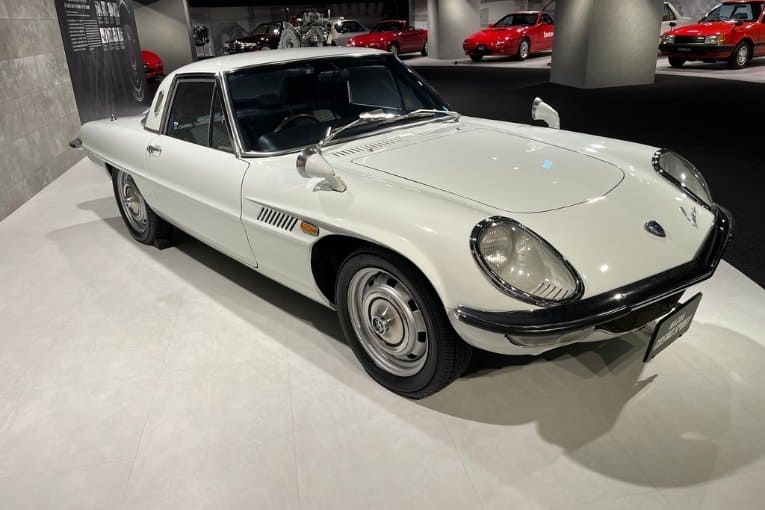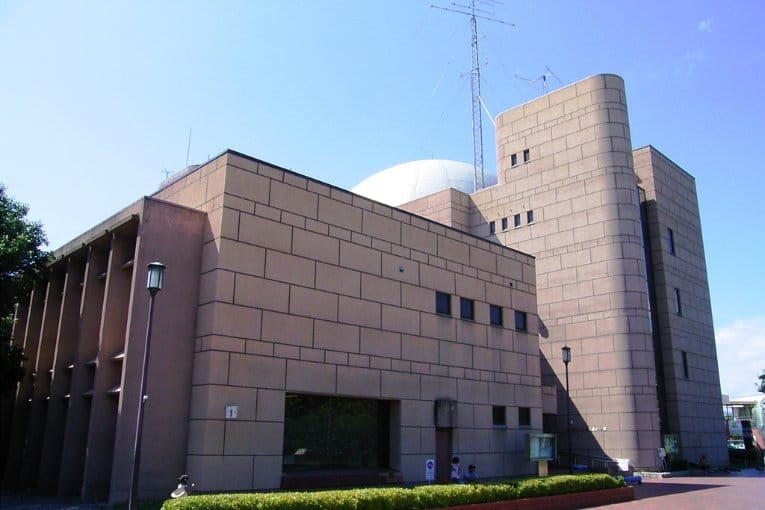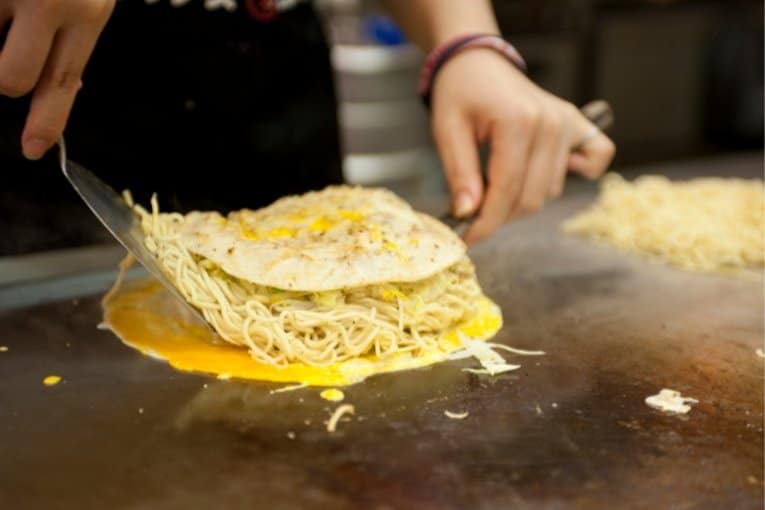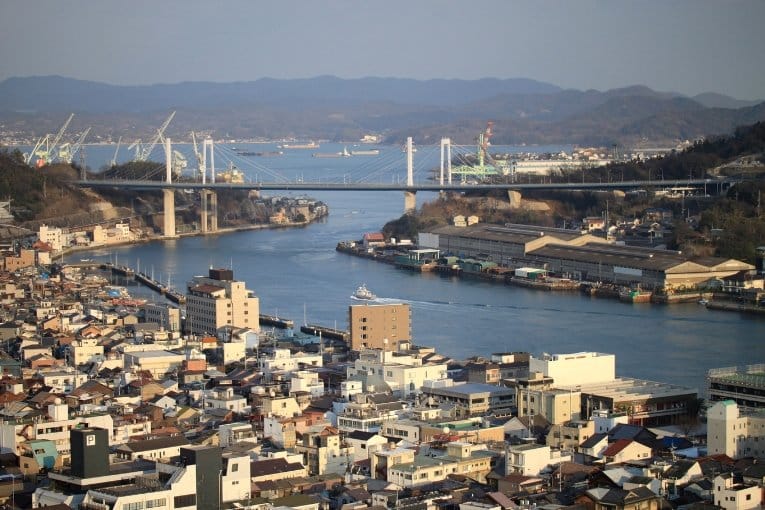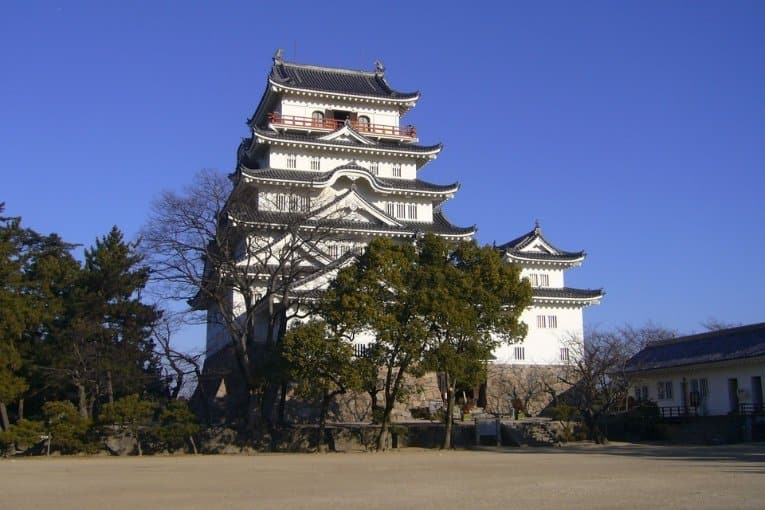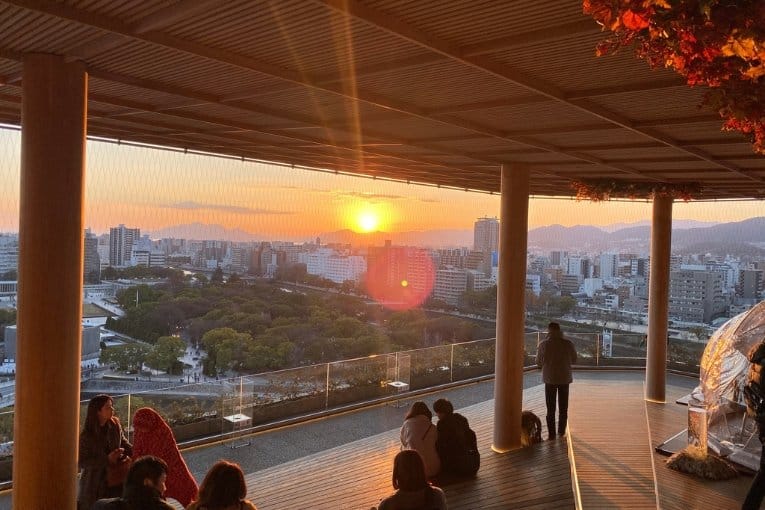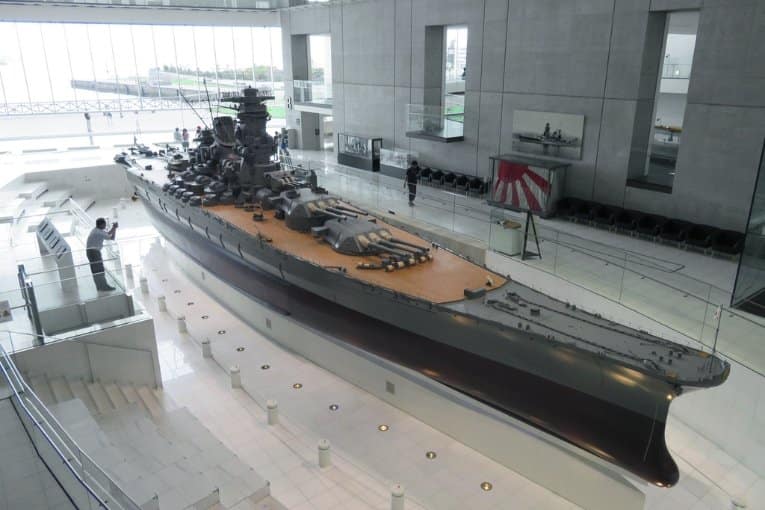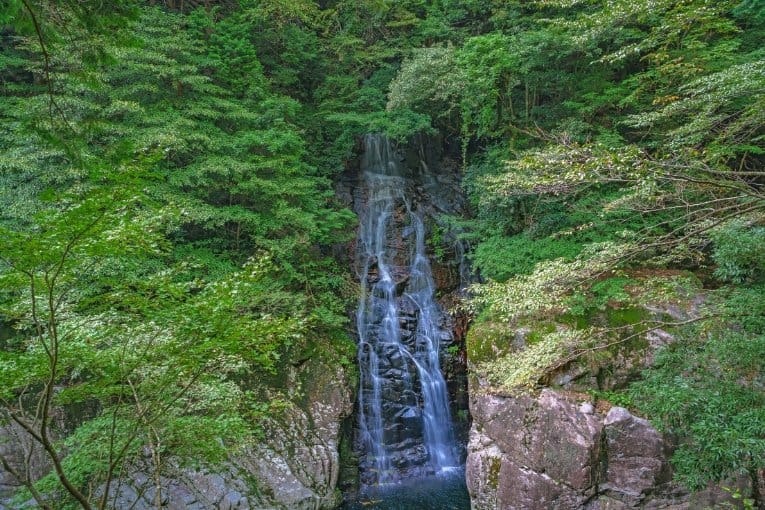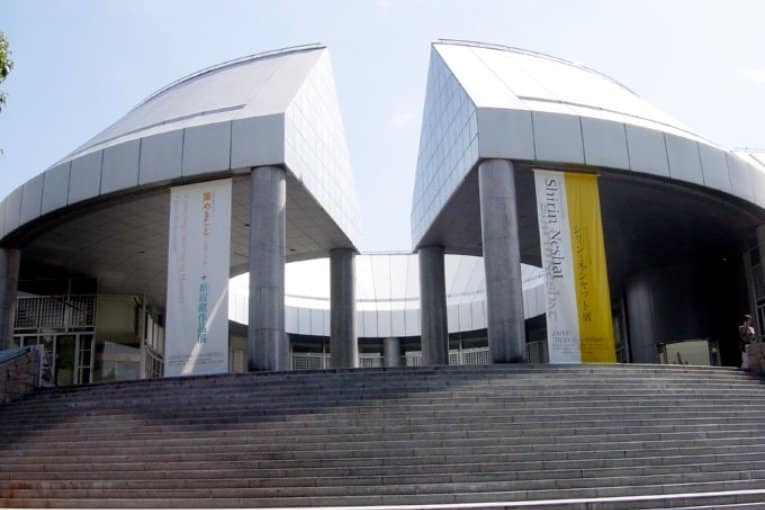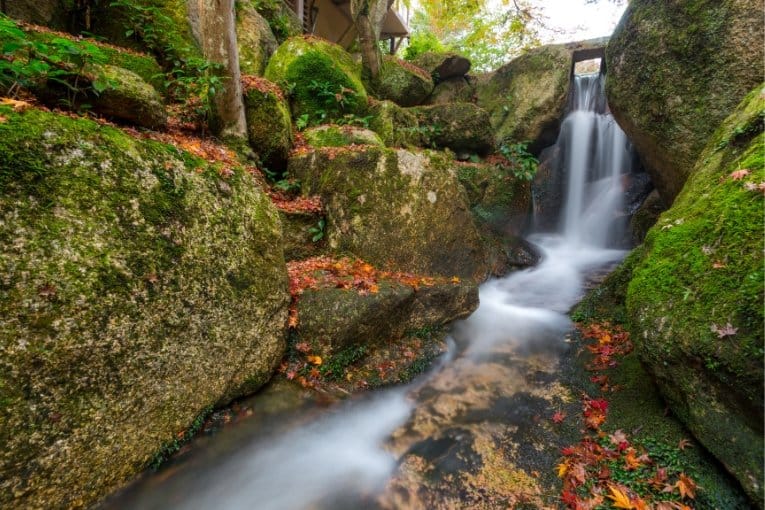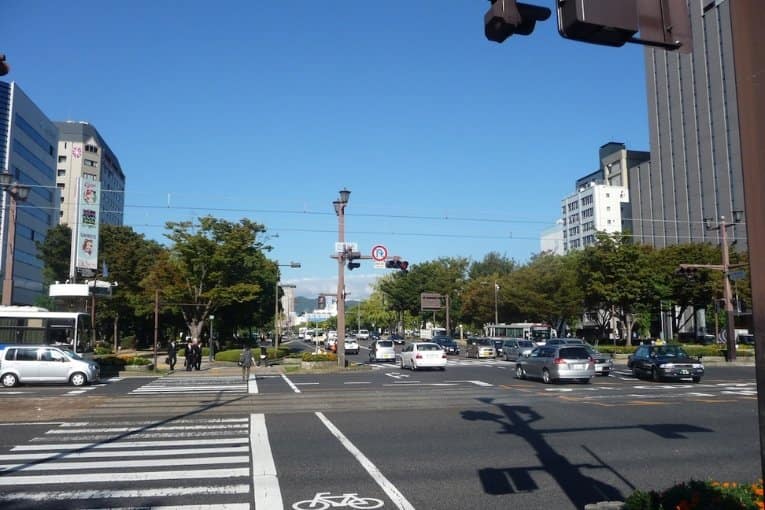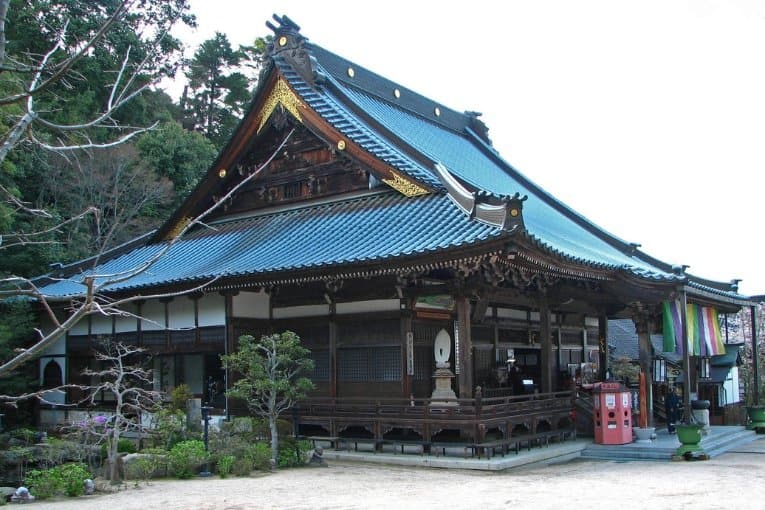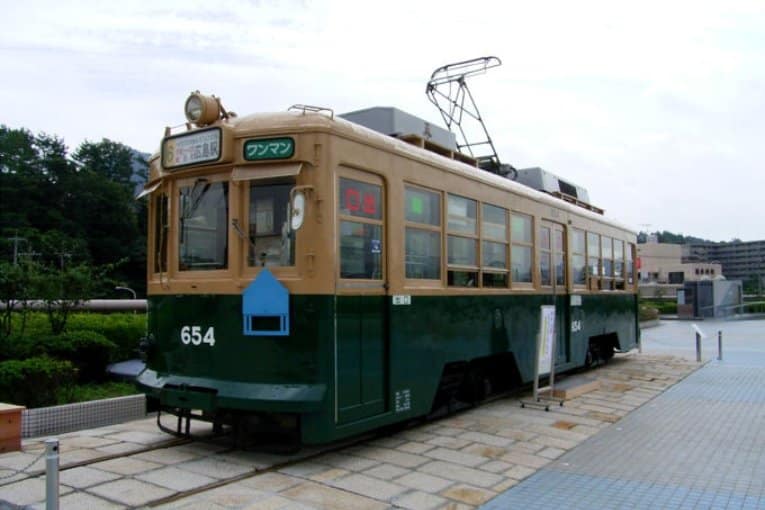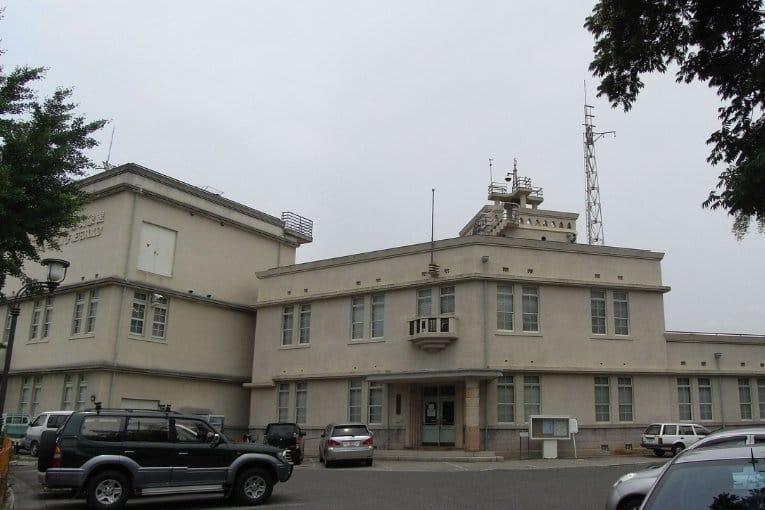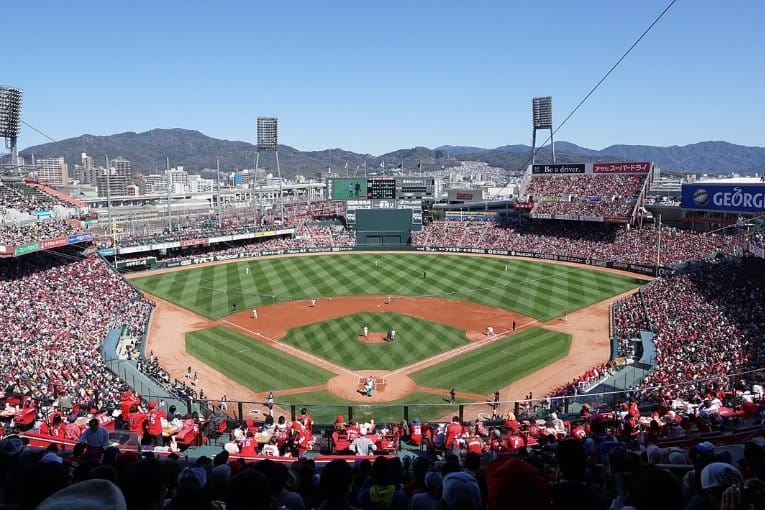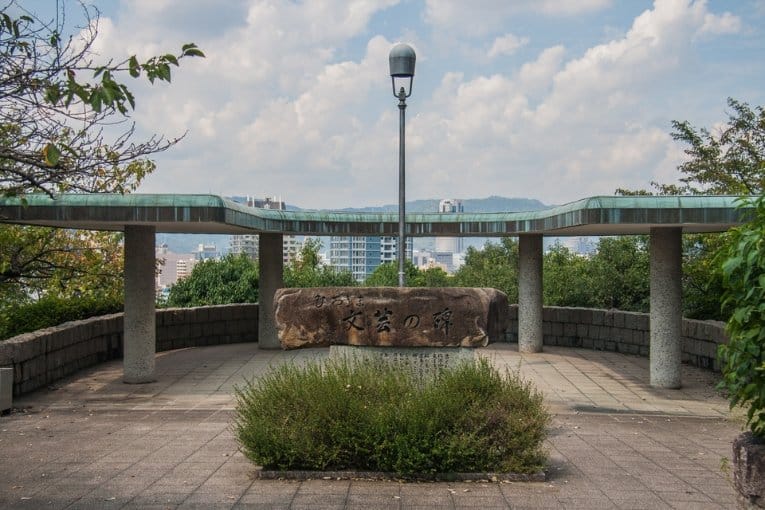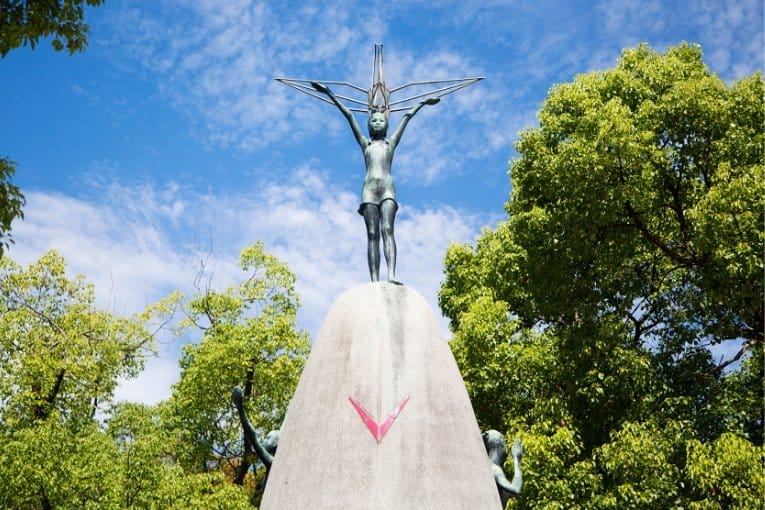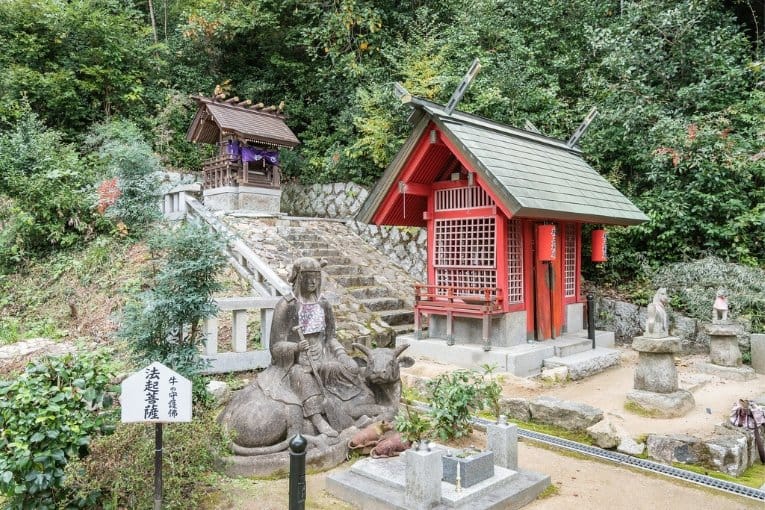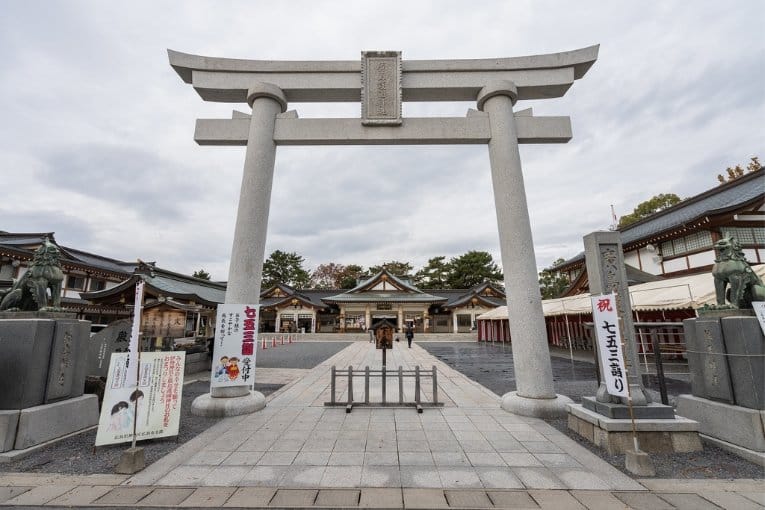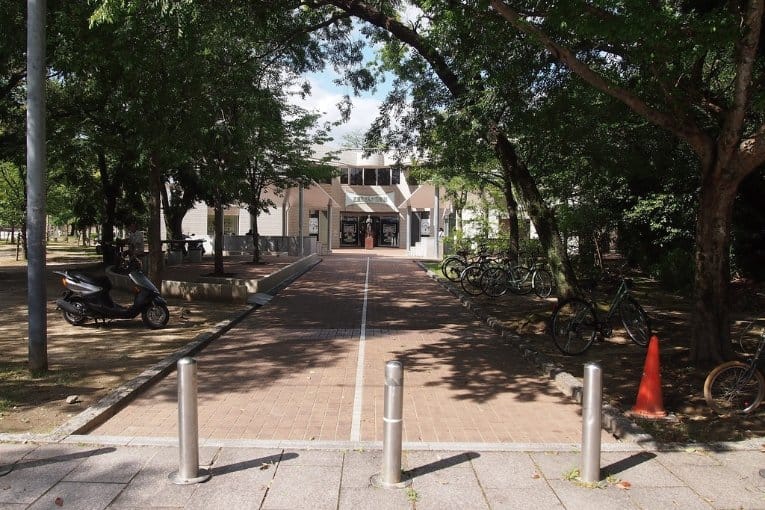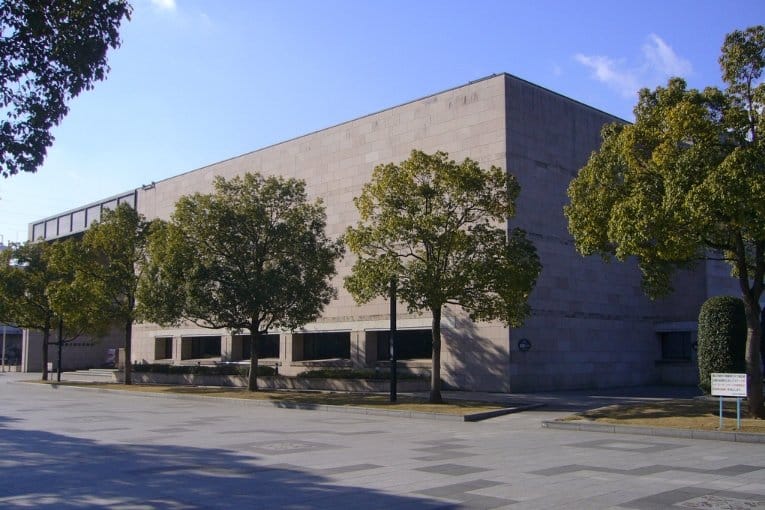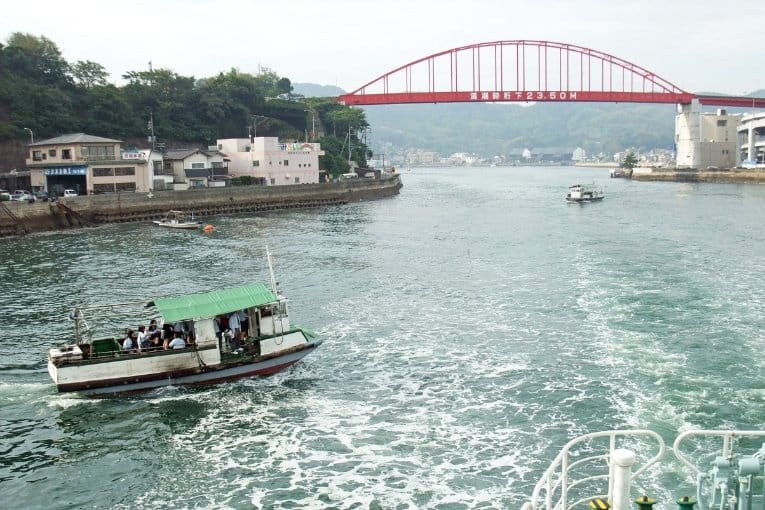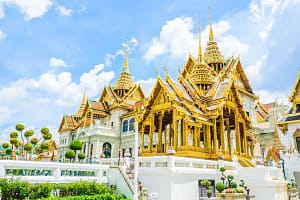A Journey Through Time: Top 40 Tourist Attractions in Hiroshima
In the heart of Japan lies Hiroshima, a city that has borne witness to the profound impacts of war and emerged as a beacon of peace and resilience. Through exploring the top 40 tourist attractions in Hiroshima, we engage with a city that has turned its darkest chapter into a powerful message for the world, making Hiroshima a profoundly moving and transformative experience for all who visit. This city, once devastated by the atomic bomb in 1945, has since rebuilt itself into a vibrant metropolis, intertwining its painful history with a steadfast commitment to peace and harmony.
As we venture into Hiroshima, we discover a city that refuses to be defined by tragedy. Instead, it reveals itself through serene parks, historic monuments, and lively cultural sites, each telling a story of recovery and hope. From the iconic Peace Memorial Park and Museum, which stand as symbols of the city’s dedication to peace, to the lush beauty of the Shukkeien Garden and the resilience of Hiroshima Castle, the city offers a diverse array of experiences. These sites serve not only as reminders of Hiroshima’s past but also as beacons of hope, demonstrating the city’s unwavering commitment to ensuring that the horrors of war are never repeated.
The essence of Hiroshima’s transformation is captured in its people’s warmth, the tranquil beauty of its natural landscapes, and the vibrancy of its urban life. As visitors, we’re invited to partake in this journey of resilience and peace, to reflect on the lessons of history, and to embrace the spirit of Hiroshima. Hiroshima invites travelers from across the world to explore its rich cultural tapestry, offering a journey through time that honors the past while celebrating the present and future.
1. Peace Memorial Park

A symbol of peace and a reminder of the atomic bomb tragedy, the Peace Memorial Park is the heart of Hiroshima’s history. Here, the iconic Genbaku Dome stands as a UNESCO World Heritage site, surrounded by memorials, a museum, and lush green spaces dedicated to the victims of the atomic bombing.
- Trip Plan: Allocate at least half a day to fully experience the park, the museum, and the nearby memorials.
- Trip Budget: Entrance to the museum is approximately $1.50 USD. Entrance to the park itself is free.
- Best Time to Visit: Spring (March to May) and autumn (September to November) offer pleasant weather and scenic beauty.
- Best Things to Do: Visit the Atomic Bomb Dome, explore the Hiroshima Peace Memorial Museum, and take a moment of silence at the Children’s Peace Monument.
- Nearest Airports: Hiroshima Airport (HIJ) is the closest, about 50 minutes by bus to the city center.
- Transports to Use: The Hiroshima Electric Railway (streetcar) is convenient for getting to the park. Buses and taxis are also available.
- Near Tourist Attractions in Hiroshima: Hiroshima Castle and Shukkeien Garden are within walking distance.
- Best Foods to Eat: Try Hiroshima-style okonomiyaki, a savory pancake, at a nearby restaurant.
- Best Places to Stay: There are numerous hotels and guesthouses in Hiroshima city center catering to various budgets.
- Travel Tips: Buy a Hiroshima tourist pass for unlimited travel on buses and trams, making it cost-effective to explore the city.
2. Hiroshima Castle
Also known as Carp Castle, Hiroshima Castle is a splendid example of a feudal castle, reconstructed after the war. It now serves as a museum of Hiroshima’s history before World War II.
- Trip Plan: Spend 1-2 hours exploring the castle’s exhibits across five floors and enjoy the panoramic views of Hiroshima from the top.
- Trip Budget: Entry to the castle is approximately $3.20 USD.
- Best Time to Visit: Cherry blossom season in early April is particularly beautiful at the castle grounds.
- Best Things to Do: Explore the castle’s museum, walk around the moat, and visit the nearby Gokoku Shrine.
- Nearest Airports: Hiroshima Airport (HIJ).
- Transports to Use: Easily accessible by Hiroshima Electric Railway and bus services.
- Near Tourist Attractions in Hiroshima: Shukkeien Garden and Hiroshima Museum of Art are close by.
- Best Foods to Eat: Sample local delicacies at cafes and restaurants near the castle.
- Best Places to Stay: Stay in central Hiroshima for easy access to the castle and other attractions.
- Travel Tips: Visit early in the morning or late afternoon to avoid crowds.
3. Miyajima Island (Itsukushima)
Miyajima Island is a serene sanctuary, celebrated for its “floating” torii gate of Itsukushima Shrine, which at high tide seems to hover above the water. This sacred island blends spiritual heritage with natural beauty, from ancient forests to mountain peaks. Visitors can immerse themselves in the tranquility of Shinto shrines, Buddhist temples, and the friendly deer that roam freely. The island’s atmosphere is charged with a timeless sense of peace and wonder, making it a must-visit for those seeking a blend of natural and spiritual experiences.
- Trip Plan: Dedicate a full day to explore the island’s shrines, hike Mount Misen, and enjoy the local wildlife.
- Trip Budget: The ferry to the island costs around $2.80 USD round trip. The shrine entrance is about $3.00 USD.
- Best Time to Visit: Autumn (October to November) for stunning foliage, though the island is picturesque year-round.
- Best Things to Do: Visit Itsukushima Shrine, hike to the top of Mount Misen, and see the wild deer roam freely.
- Nearest Airports: Hiroshima Airport (HIJ).
- Transports to Use: Take a train to Miyajimaguchi Station, then a ferry to Miyajima.
- Near Tourist Attractions in Hiroshima: Mount Misen, Daisho-in Temple, and Momijidani Park.
- Best Foods to Eat: Try Miyajima’s famous momiji manju (maple leaf-shaped cake) and fresh oysters.
- Best Places to Stay: Choose from traditional ryokans on the island or hotels in Hiroshima city.
- Travel Tips: Check ferry times in advance and consider staying overnight on the island for a unique experience.
4. Shukkeien Garden
Shukkeien Garden, a quintessential example of traditional Japanese garden design, offers visitors a miniature landscape to explore, complete with tiny valleys, mountains, and forests, all meticulously arranged around a central pond. This peaceful haven in the heart of Hiroshima provides a tranquil retreat from the urban bustle, inviting guests to wander through its paths, cross its quaint bridges, and discover the teahouses hidden among its foliage. Each season brings a new face to Shukkeien, from the delicate cherry blossoms of spring to the fiery maples of autumn, making every visit a unique experience.
- Trip Plan: Allow 1-2 hours to meander through the paths, bridges, and around the central pond.
- Trip Budget: The entrance fee is about $2.50 USD.
- Best Time to Visit: Spring for cherry blossoms and autumn for colorful foliage.
- Best Things to Do: Enjoy a tea ceremony at the tea house, feed the koi fish in the pond, and relax in the serene surroundings.
- Nearest Airports: Hiroshima Airport (HIJ).
- Transports to Use: A short ride by bus or streetcar from Hiroshima city center.
- Near Tourist Attractions in Hiroshima: Hiroshima Castle and Hiroshima Prefectural Art Museum are nearby.
- Best Foods to Eat: Sample matcha (green tea) and traditional Japanese sweets at the tea house.
- Best Places to Stay: Accommodations in central Hiroshima offer convenience for visiting the garden and other attractions.
- Travel Tips: Visit during the week to avoid weekend crowds, and don’t miss the late afternoon light for photography.
5. Hiroshima Peace Memorial Museum
The Hiroshima Peace Memorial Museum stands as a sobering reminder of the tragic day in August 1945, when Hiroshima faced the devastating impact of the atomic bomb. Through its exhibits, the museum not only recounts the harrowing events of that day but also promotes a message of peace and the abolition of nuclear weapons. Visitors are taken on an emotional journey, with personal stories, belongings of the victims, and exhibits that detail the aftermath and reconstruction of Hiroshima. The museum’s narrative is a powerful call for peace, making it a must-visit for those looking to understand the profound effects of nuclear warfare on humanity.
- Trip Plan: Allocate 2-3 hours to thoroughly engage with the exhibits and reflect on the messages of peace.
- Trip Budget: The entrance fee is approximately $1.50 USD.
- Best Time to Visit: Anytime, though mornings tend to be less crowded.
- Best Things to Do: Visit all the exhibit halls, view the Peace Memorial Park from the museum’s windows, and participate in any available peace-related activities or talks.
- Nearest Airports: Hiroshima Airport (HIJ).
- Transports to Use: The museum is accessible via streetcar, bus, or taxi from Hiroshima city center.
- Near Tourist Attractions in Hiroshima: Adjacent to the Peace Memorial Park, close to the Atomic Bomb Dome.
- Best Foods to Eat: Hiroshima is known for its okonomiyaki; several restaurants near the museum offer this local specialty.
- Best Places to Stay: Central Hiroshima has a range of accommodations, from budget hostels to luxury hotels.
- Travel Tips: Visit early in the day for a more contemplative experience; the museum provides audio guides in multiple languages.
6. Atomic Bomb Dome
The Atomic Bomb Dome is an iconic ruin that poignantly symbolizes the destructive power of nuclear weapons and the resilience of Hiroshima’s people. Originally the Hiroshima Prefectural Industrial Promotion Hall, the building’s skeletal remains were preserved exactly as they stood after the bombing, serving as a haunting reminder of war’s tragedy. Located at the Peace Memorial Park, the Dome is a UNESCO World Heritage Site and an integral part of Hiroshima’s peace movement. It draws visitors from around the world, compelling them to contemplate peace and the human cost of conflict.
- Trip Plan: Viewing the Dome can be done at any time, but allow for at least an hour to take in the site and the surrounding memorials.
- Trip Budget: There is no fee to view the Atomic Bomb Dome.
- Best Time to Visit: Early morning or late afternoon offers softer light for reflection and photography.
- Best Things to Do: Reflect on the significance of the site, visit the nearby Peace Memorial Museum, and walk through the Peace Memorial Park.
- Nearest Airports: Hiroshima Airport (HIJ).
- Transports to Use: Easily reached by streetcar or bus from any part of Hiroshima city.
- Near Tourist Attractions in Hiroshima: The Peace Memorial Park and Hiroshima Peace Memorial Museum are steps away.
- Best Foods to Eat: Try Hiroshima-style okonomiyaki at one of the many eateries in the city.
- Best Places to Stay: There are numerous accommodation options in the city center, catering to all budgets and preferences.
- Travel Tips: Take time to visit at different times of the day; the Dome’s appearance changes significantly from morning to evening.
7. Miyajima Ropeway (Mount Misen)
The Miyajima Ropeway offers an exhilarating journey to the summit of Mount Misen, Miyajima Island’s highest peak. As you ascend, breathtaking views of the Seto Inland Sea and the lush forests of Miyajima unfold before you. The ropeway journey is split into two sections, offering a seamless blend of technological convenience and natural beauty. At the summit, visitors are rewarded with panoramic views that stretch to the horizon, serene walking trails, and the historical Daisho-in Temple. It’s a spiritual and scenic excursion that highlights the island’s natural splendor and offers a unique perspective on this revered destination.
- Trip Plan: Plan for half a day to enjoy the ropeway ride and explore Mount Misen’s summit.
- Trip Budget: A round-trip ticket on the ropeway is approximately $18.00 USD.
- Best Time to Visit: Spring and autumn for the best weather and scenic beauty, though the views are stunning year-round.
- Best Things to Do: Enjoy the views from the ropeway, explore the summit’s hiking trails, and visit Daisho-in Temple.
- Nearest Airports: Hiroshima Airport (HIJ).
- Transports to Use: Access Miyajima via ferry, then follow the signs to the ropeway station.
- Near Tourist Attractions in Hiroshima: Itsukushima Shrine and the floating torii gate are must-visits on Miyajima.
- Best Foods to Eat: Indulge in Miyajima’s specialties like grilled oysters and momiji manju.
- Best Places to Stay: Opt for a traditional ryokan on Miyajima to experience Japanese hospitality, or stay in Hiroshima for more variety.
- Travel Tips: Check the ropeway’s operation times before your visit, as they can vary with the seasons.
8. Hiroshima Museum of Art
Photo Credit: Kiyokun / Wikipedia
Nestled in the heart of Hiroshima, the Hiroshima Museum of Art offers a serene and enlightening retreat for art lovers. Opened in 1978, this museum houses a remarkable collection of European art from the 19th and 20th centuries, including works by Monet, Renoir, and Picasso, alongside a curated selection of modern Japanese art that reflects the beauty and resilience of the human spirit. The museum’s architecture, with its spacious galleries bathed in natural light, provides a tranquil backdrop for the art on display, making it a haven of peace and inspiration in the bustling city.
- Trip Plan: Spend 2-3 hours admiring the collections and enjoying the museum’s peaceful ambiance.
- Trip Budget: Admission is approximately $9.00 USD.
- Best Time to Visit: Year-round; the museum’s climate control makes it comfortable in any season.
- Best Things to Do: Explore the permanent collection, visit temporary exhibitions, and relax in the museum café.
- Nearest Airports: Hiroshima Airport (HIJ).
- Transports to Use: Accessible via bus, streetcar, or taxi from downtown Hiroshima.
- Near Tourist Attractions in Hiroshima: Hiroshima Castle and Shukkeien Garden are within walking distance.
- Best Foods to Eat: The museum café offers a selection of light meals and refreshments perfect for a mid-visit break.
- Best Places to Stay: Choose accommodations in central Hiroshima for easy access to the museum and other major attractions.
- Travel Tips: Check the museum’s website for information on current and upcoming exhibitions to plan your visit.
9. Hiroshima National Peace Memorial Hall for the Atomic Bomb Victims
Photo Credit: Taisyo / Wikipedia
The Hiroshima National Peace Memorial Hall for the Atomic Bomb Victims is a poignant tribute to those who lost their lives in the atomic bombing of Hiroshima. Designed by renowned architect Kenzo Tange, the Hall is both a place of remembrance and reflection. Visitors can explore exhibits that include photographs, testimonials, and personal belongings of the victims, providing a deeply human context to the tragedy. The Hall’s contemplative design encourages reflection on the preciousness of peace and the human cost of war, offering a solemn space for prayer and contemplation.
- Trip Plan: Allocate 1-2 hours to fully engage with the Hall’s exhibitions and reflective spaces.
- Trip Budget: There is no admission fee, making it accessible to all visitors.
- Best Time to Visit: Open year-round; visiting early in the morning allows for a more personal experience.
- Best Things to Do: View the exhibits, listen to survivors’ testimonials, and spend a moment in the Hall of Remembrance.
- Nearest Airports: Hiroshima Airport (HIJ).
- Transports to Use: Easily reachable by streetcar, bus, or taxi from the city center.
- Near Tourist Attractions in Hiroshima: Located within the Peace Memorial Park, near the Peace Memorial Museum and the Atomic Bomb Dome.
- Best Foods to Eat: Local eateries around the Peace Park offer Hiroshima-style okonomiyaki, among other delicacies.
- Best Places to Stay: Staying in central Hiroshima provides convenient access to the Peace Memorial Park and its surrounding attractions.
- Travel Tips: Take time to absorb the exhibits and the Hall’s atmosphere; it’s a place for quiet reflection.
10. Okonomimura
Photo Credit: Maarten Heerlien / Flickr
Okonomimura is a culinary haven in Hiroshima, dedicated to the city’s famous dish, Hiroshima-style okonomiyaki. This multi-story building is home to over two dozen okonomiyaki restaurants, each offering its unique take on this beloved savory pancake. Filled with layers of ingredients including noodles, cabbage, pork, and seafood, topped with a sweet-savory sauce, Hiroshima-style okonomiyaki is a must-try dish. Okonomimura not only provides a delicious introduction to local cuisine but also offers a lively atmosphere where visitors can watch their meals being prepared on large griddles right in front of them.
- Trip Plan: Spend an evening sampling different versions of okonomiyaki across various stalls.
- Trip Budget: A hearty serving of okonomiyaki costs approximately $8.00 to $12.00 USD.
- Best Time to Visit: Evening is the best time to experience the vibrant atmosphere and enjoy dinner.
- Best Things to Do: Try okonomiyaki at different stalls, interact with the chefs, and enjoy the bustling environment.
- Nearest Airports: Hiroshima Airport (HIJ).
- Transports to Use: Easily accessible by streetcar or bus from anywhere in Hiroshima.
- Near Tourist Attractions in Hiroshima: Close to the central shopping district and Hiroshima Peace Memorial Park.
- Best Foods to Eat: Beyond okonomiyaki, sample other local specialties offered at Okonomimura.
- Best Places to Stay: Central Hiroshima offers a wide range of accommodations, convenient for visiting Okonomimura and other attractions.
- Travel Tips: Visit with an empty stomach and an open mind; be ready to explore multiple floors for the full experience.
11. Mitaki-dera Temple
Mitaki-dera is a serene Buddhist temple nestled in the lush forests of Hiroshima. Known for its beautiful scenery that changes dramatically with the seasons, this temple offers a tranquil retreat from the city’s hustle and bustle. The temple grounds are adorned with three waterfalls, ancient pagodas, and a collection of Jizo statues, providing a peaceful setting for reflection and meditation. The autumn colors here are particularly striking, making it a favorite spot for both locals and tourists seeking a moment of peace amidst nature’s beauty.
- Trip Plan: Allow 2-3 hours to explore the temple grounds and enjoy the natural surroundings.
- Trip Budget: Entry is free, but donations are appreciated.
- Best Time to Visit: Autumn for the foliage; spring for cherry blossoms and fresh greenery.
- Best Things to Do: Hike the surrounding trails, visit the pagodas, and enjoy the calming sound of waterfalls.
- Nearest Airports: Hiroshima Airport (HIJ).
- Transports to Use: Accessible by bus or taxi from Hiroshima city center.
- Near Tourist Attractions in Hiroshima: Close to Hiroshima’s main attractions yet offers a secluded natural escape.
- Best Foods to Eat: Local tea and snacks are available at small shops near the temple.
- Best Places to Stay: Central Hiroshima accommodations offer easy access to the temple and other attractions.
- Travel Tips: Wear comfortable shoes for walking and bring a camera to capture the stunning scenery.
12. Hiroshima Prefectural Art Museum
Photo Credit: Wpcpey / Wikipedia
The Hiroshima Prefectural Art Museum, located near Shukkeien Garden, offers a diverse collection of modern and contemporary art, with a focus on artists connected to the Chugoku region. The museum’s exhibits range from European masterpieces to works by Japanese artists that reflect the landscapes and culture of Hiroshima. Its spacious galleries and special exhibitions provide a stimulating cultural experience, offering insights into the evolving art scene in Japan and beyond. The museum also hosts educational programs and workshops, making art accessible to all ages.
- Trip Plan: Spend a half-day exploring the museum’s collections and special exhibitions.
- Trip Budget: Approximately $6.00 USD for general admission, with possible additional charges for special exhibitions.
- Best Time to Visit: Any time of year; the museum’s offerings change regularly.
- Best Things to Do: Attend a workshop, explore temporary exhibitions, and enjoy the museum’s architecture.
- Nearest Airports: Hiroshima Airport (HIJ).
- Transports to Use: A short walk from Shukkeien Garden, easily reached by bus or streetcar.
- Near Tourist Attractions in Hiroshima: Adjacent to Shukkeien Garden and a short distance from Hiroshima Castle.
- Best Foods to Eat: The museum café offers light meals and refreshments, perfect for a break.
- Best Places to Stay: Choose from a variety of accommodations in central Hiroshima.
- Travel Tips: Check the museum’s website for information on current exhibitions and events.
13. Mazda Museum
Photo Credit: ブラッドノック / Flickr
The Mazda Museum in Hiroshima provides an intriguing look into the history and future of the Mazda Motor Corporation, one of Japan’s leading automotive manufacturers. Through guided tours, visitors can explore Mazda’s commitment to innovation, environmental sustainability, and the future of transportation. The museum showcases a range of vehicles from classic models to the latest in automotive technology, including Mazda’s pioneering rotary engines. The tour also includes a visit to an actual vehicle assembly line, offering a rare glimpse into the manufacturing process.
- Trip Plan: Tours last about 90 minutes and must be booked in advance.
- Trip Budget: Free, but reservation is required.
- Best Time to Visit: Weekdays to observe the assembly line in operation.
- Best Things to Do: Learn about Mazda’s history, explore the vehicle exhibits, and witness the assembly line.
- Nearest Airports: Hiroshima Airport (HIJ).
- Transports to Use: Accessible by train and shuttle bus from Hiroshima station.
- Near Tourist Attractions in Hiroshima: A bit outside the main city attractions, offering a unique perspective on Hiroshima’s industrial side.
- Best Foods to Eat: Dining options are limited at the museum, so plan to eat before or after your visit.
- Best Places to Stay: Staying in Hiroshima city center offers the most convenience for overall sightseeing.
- Travel Tips: Make sure to book your tour in advance, as spots are limited and fill up quickly.
14. Hiroshima Children’s Museum (5-Days Children’s Cultural Science Museum)
Photo Credit: Taisyo / Wikipedia
The Hiroshima Children’s Museum is a space of wonder and learning, designed to spark curiosity and imagination in young minds. The museum features interactive exhibits on science, astronomy, and art, making learning fun and engaging. Its planetarium offers shows that take visitors on a journey through the stars, while the various hands-on exhibits encourage exploration in physics, technology, and creativity. It’s a family-friendly destination that offers a stimulating educational experience for children and an enjoyable visit for adults.
- Trip Plan: Allocate 2-3 hours to explore the museum and attend a planetarium show.
- Trip Budget: Entry to the museum is free; planetarium shows have a small fee of around $3.00 USD per person.
- Best Time to Visit: Ideal year-round; weekend mornings can be particularly lively and engaging.
- Best Things to Do: Participate in the interactive exhibits, attend a planetarium show, and enjoy the museum’s workshops.
- Nearest Airports: Hiroshima Airport (HIJ).
- Transports to Use: Easily accessible by streetcar or bus from central Hiroshima.
- Near Tourist Attractions in Hiroshima: Close to Hiroshima Peace Memorial Park and other central attractions.
- Best Foods to Eat: The museum café offers kid-friendly meals and snacks.
- Best Places to Stay: Central Hiroshima accommodations are convenient for families visiting the museum.
- Travel Tips: Check the museum’s schedule for special events and workshops that might interest your family.
15. Hiroshima City Asa Zoological Park
Photo Credit: Taisyo / Wikipedia
The Hiroshima City Asa Zoological Park is a sprawling sanctuary for over 160 species of animals, offering an immersive experience into the animal kingdom. The zoo focuses on conservation, education, and recreation, featuring habitats that closely mimic the animals’ natural environments. Visitors can enjoy close encounters with a variety of species, from majestic African elephants to playful red pandas. The zoo’s layout encourages leisurely walks through different thematic areas, making it an ideal outing for animal lovers of all ages.
- Trip Plan: Plan to spend at least half a day exploring the various animal exhibits and shows.
- Trip Budget: Admission is about $6.00 USD for adults, with reduced rates for children and elder people.
- Best Time to Visit: Spring and fall offer pleasant weather for walking around the zoo.
- Best Things to Do: Attend animal feeding times, watch educational shows, and visit the children’s petting zoo.
- Nearest Airports: Hiroshima Airport (HIJ).
- Transports to Use: The zoo is accessible by bus from Hiroshima station. Consider renting a car for convenience.
- Near Tourist Attractions in Hiroshima: Situated a bit away from the city center, offering a green escape into nature.
- Best Foods to Eat: The zoo has several eateries serving snacks and light meals suitable for families.
- Best Places to Stay: Staying in central Hiroshima is recommended, with easy access to public transportation to the zoo.
- Travel Tips: Wear comfortable shoes for walking and check the zoo’s schedule for special events or animal encounters.
16. Wood Egg Okonomiyaki Museum
The Wood Egg Okonomiyaki Museum offers a unique and flavorful dive into the world of Hiroshima’s beloved dish, okonomiyaki. This interactive museum allows visitors to learn about the history and cultural significance of okonomiyaki, from its origins to its evolution into a modern-day comfort food. Guests can participate in cooking classes, where they learn to make their own okonomiyaki on traditional teppan grills. It’s not just a museum; it’s an immersive culinary experience that celebrates Hiroshima’s gastronomic heritage.
- Trip Plan: Spend 1-2 hours for the museum tour and cooking class.
- Trip Budget: Entry is free, but the cooking class costs approximately $10.00 USD per person.
- Best Time to Visit: A fun experience year-round, especially enjoyable for food enthusiasts.
- Best Things to Do: Take the cooking class, explore the interactive exhibits, and enjoy your own okonomiyaki creation.
- Nearest Airports: Hiroshima Airport (HIJ).
- Transports to Use: Accessible by public transportation from central Hiroshima; the museum is located in the city.
- Near Tourist Attractions in Hiroshima: Close to Hiroshima’s main shopping and dining areas, making it easy to combine with other activities.
- Best Foods to Eat: Your own okonomiyaki, made in the cooking class, is a must-eat.
- Best Places to Stay: Choose from the wide range of accommodations in central Hiroshima for convenience.
- Travel Tips: Book the cooking class in advance to secure your spot, especially if visiting during peak tourist seasons.
17. Senko-ji Park and Temple
Photo Credit: 663highland / Wikipedia
Senko-ji Park and Temple, located in the scenic city of Onomichi, just a short journey from Hiroshima, offers breathtaking views of the Seto Inland Sea and a tranquil spiritual retreat. The temple is part of the Chugoku 33 Kannon Pilgrimage and is famed for its cherry blossoms in spring. A ropeway or a scenic hike leads visitors to the temple, perched on a hilltop. The park around it is a canvas of seasonal colors, making it a popular spot for both pilgrims and tourists seeking beauty and serenity.
- Trip Plan: Dedicate at least half a day to enjoy the hike, temple visit, and surrounding views.
- Trip Budget: Ropeway to the park costs around $7.00 USD round trip.
- Best Time to Visit: Spring for cherry blossoms and autumn for vibrant foliage.
- Best Things to Do: Take the ropeway up, visit Senko-ji Temple, and enjoy the panoramic views from the observatory.
- Nearest Airports: Hiroshima Airport (HIJ), then a train ride to Onomichi.
- Transports to Use: Train to Onomichi Station, then walk or take the ropeway up to the park.
- Near Tourist Attractions in Hiroshima: Explore the charming lanes and temples of Onomichi.
- Best Foods to Eat: Sample local specialties in Onomichi, famous for its ramen.
- Best Places to Stay: Stay in Onomichi for a quaint experience or in Hiroshima for more options.
- Travel Tips: Wear comfortable shoes for hiking and bring a camera for the stunning views.
18. Hiroshima Botanical Garden
The Hiroshima Botanical Garden, located on the outskirts of the city, is a sprawling green oasis that houses over 10,000 species of plants. The garden’s features include a tropical greenhouse, a Japanese garden, and themed sections that showcase plants from around the world. Seasonal flowers and foliage provide a year-round spectacle, making it a perfect spot for nature lovers and those seeking a peaceful escape. The garden also hosts events and workshops, offering a deeper dive into botany and gardening.
- Trip Plan: Plan for a leisurely half-day visit to fully enjoy the gardens.
- Trip Budget: The entrance fee is around $4.00 USD.
- Best Time to Visit: Year-round, with each season offering its own unique beauty.
- Best Things to Do: Explore the greenhouse, stroll through the Japanese garden, and participate in seasonal events.
- Nearest Airports: Hiroshima Airport (HIJ).
- Transports to Use: Bus services from Hiroshima city center to the garden.
- Near Tourist Attractions in Hiroshima: Combine with a visit to the Asa Zoological Park nearby.
- Best Foods to Eat: Picnic areas are available; bring your own or purchase snacks at the garden café.
- Best Places to Stay: Accommodations in Hiroshima City offer easy access to the garden and other attractions.
- Travel Tips: Check the garden’s schedule for special bloom events or workshops of interest.
19. Onomichi
Onomichi, a charming seaside town known for its picturesque hillsides, historic temples, and narrow lanes, offers a glimpse into Japan’s quaint coastal life. The town has inspired filmmakers and writers with its scenic beauty and tranquil atmosphere. Visitors can explore the Temple Walk, a route that meanders past ancient temples, or enjoy a leisurely bike ride along the Shimanami Kaido, which starts from Onomichi. The town’s cafes, art galleries, and shops offer a delightful blend of traditional and contemporary culture.
- Trip Plan: Spend a full day or an overnight trip exploring Onomichi’s attractions and relaxed vibe.
- Trip Budget: Exploring the town is free; budget for meals and any specific attractions you wish to visit.
- Best Time to Visit: Enjoyable year-round, with cherry blossom season in spring being particularly picturesque.
- Best Things to Do: Walk the Temple Route, cycle the Shimanami Kaido, and visit the Onomichi City Museum of Art.
- Nearest Airports: Hiroshima Airport (HIJ), then a train or bus to Onomichi.
- Transports to Use: Train is the most convenient way to reach Onomichi from Hiroshima.
- Near Tourist Attractions in Hiroshima: The Shimanami Kaido offers access to beautiful islands in the Seto Inland Sea.
- Best Foods to Eat: Try local specialties like Onomichi ramen and fresh seafood dishes.
- Best Places to Stay: Choose from traditional ryokans, guesthouses, and modern hotels in Onomichi.
- Travel Tips: Renting a bicycle is a great way to explore Onomichi and its surroundings at your own pace.
20. Fukuyama Castle
Photo Credit: 663highland / Wikipedia
Fukuyama Castle, often referred to as Hisamatsu Castle, is a striking landmark in Fukuyama. Originally built in the early 17th century, it was partially reconstructed after World War II. Today, it serves as a museum showcasing the region’s history and culture. The castle, with its elegant white walls and contrasting wooden accents, stands as a testament to Japan’s feudal era and architectural prowess. Surrounded by a serene park that blooms with cherry blossoms in spring, it offers a picturesque setting for a leisurely exploration.
- Trip Plan: Spend 1-2 hours exploring the castle’s museum and grounds.
- Trip Budget: Entrance to the museum is approximately $3.00 USD.
- Best Time to Visit: Spring for cherry blossoms and autumn for the changing leaves.
- Best Things to Do: Tour the museum, stroll in the surrounding park, and enjoy the seasonal beauty.
- Nearest Airports: Hiroshima Airport (HIJ), then a train ride to Fukuyama.
- Transports to Use: Easily accessible by train, located near Fukuyama Station.
- Near Tourist Attractions in Hiroshima: Visit nearby traditional gardens and historical streets in Fukuyama.
- Best Foods to Eat: Fukuyama is known for its seafood; try local specialties at nearby restaurants.
- Best Places to Stay: Fukuyama offers various accommodations, from traditional ryokans to modern hotels.
- Travel Tips: The castle grounds are a popular spot for cherry blossom viewing in spring; arrive early to enjoy the scenery without the crowds.
21. Hiroshima Orizuru Tower
Photo Credit: Kanesue / Flickr
Hiroshima Orizuru Tower is a modern addition to the city’s skyline, offering panoramic views of Hiroshima and the Peace Memorial Park. The tower features an observation deck, a café, and interactive exhibits about the city’s history and reconstruction. Visitors can also participate in making origami cranes, a symbol of peace, and add them to the tower’s Orizuru Wall. The tower’s architecture and the meaningful activities it offers make it a poignant stop for reflecting on peace and the city’s resilience.
- Trip Plan: Allocate 1-2 hours to enjoy the views and explore the exhibits.
- Trip Budget: Admission to the observation deck is around $8.00 USD.
- Best Time to Visit: Any time of year; sunset offers particularly stunning views.
- Best Things to Do: Visit the observation deck, make an origami crane, and explore the exhibits on Hiroshima’s history.
- Nearest Airports: Hiroshima Airport (HIJ).
- Transports to Use: Centrally located, easily accessible by streetcar, bus, or on foot from the Peace Memorial Park.
- Near Tourist Attractions in Hiroshima: Adjacent to the Peace Memorial Park and close to the Atomic Bomb Dome.
- Best Foods to Eat: The café on the observation deck offers light meals and snacks with a view.
- Best Places to Stay: Numerous hotels in central Hiroshima are within walking distance of the tower.
- Travel Tips: Visit in the late afternoon to enjoy the daytime view, sunset, and illuminated cityscape at night.
22. Yamato Museum (Kure Maritime Museum)
Photo Credit: Aw1805 / Wikipedia
The Kure Maritime Museum, commonly known as the Yamato Museum, is dedicated to Japan’s maritime history and the Imperial Japanese Navy. The museum’s centerpiece is a detailed, large-scale model of the battleship Yamato, which was constructed in Kure. Exhibits include naval artifacts, documents, and interactive displays that provide insights into Japan’s shipbuilding prowess and the role of Kure as a naval base. The museum not only pays homage to the technological advancements but also offers a reflective look at the impact of war.
- Trip Plan: Spend 2-3 hours exploring the museum’s exhibits and models.
- Trip Budget: Admission is approximately $6.00 USD.
- Best Time to Visit: Interesting year-round; less crowded on weekdays.
- Best Things to Do: View the Yamato model, explore the shipbuilding exhibits, and learn about naval history.
- Nearest Airports: Hiroshima Airport (HIJ), then a train ride to Kure.
- Transports to Use: Accessible by train from Hiroshima to Kure, then a short walk to the museum.
- Near Tourist Attractions in Hiroshima: Visit nearby historical shipyards and naval facilities in Kure.
- Best Foods to Eat: Kure is famous for its seafood; enjoy fresh local dishes at nearby restaurants.
- Best Places to Stay: Accommodations in Kure offer convenience for visiting the museum, or stay in Hiroshima for more options.
- Travel Tips: English information may be limited; consider hiring a guide or using an audio guide for a more enriching experience.
23. Sandankyo Gorge
Sandankyo Gorge is a natural wonder located a bit outside Hiroshima City, offering a stunning display of waterfalls, rapids, and serene pools along a secluded valley. This gorge is a designated national scenic beauty spot, known for its untouched natural landscapes that can be explored via hiking trails that run alongside the river. The gorge is especially beautiful in autumn when the foliage turns into vibrant hues of red and yellow, but its lush greenery in spring and summer, as well as the icy sculptures in winter, make it a year-round destination for nature lovers.
- Trip Plan: Dedicate a full day to hiking and exploring the gorge’s natural beauty.
- Trip Budget: Entry is free; budget for transport and any guided tours.
- Best Time to Visit: Autumn for the fall colors, though spring and summer offer lush landscapes.
- Best Things to Do: Hike the trails, visit the waterfalls, and enjoy a boat ride in one of the gorge’s serene pools.
- Nearest Airports: Hiroshima Airport (HIJ), followed by a bus or car journey.
- Transports to Use: Accessible by bus from Hiroshima; renting a car is also a good option for flexibility.
- Near Tourist Attractions in Hiroshima: The rural area around the gorge offers hot springs and traditional inns.
- Best Foods to Eat: Try local dishes at small restaurants and inns near the gorge.
- Best Places to Stay: Stay in nearby ryokans or guesthouses for a traditional Japanese experience.
- Travel Tips: Wear comfortable hiking shoes and bring water and snacks for the trail.
24. Hiroshima City Museum of Contemporary Art
Photo Credit: Taisyo / Wikipedia
The Hiroshima City Museum of Contemporary Art, nestled on a hilltop in Hijiyama Park, is a landmark of cultural significance, housing an impressive collection of post-war Japanese and international contemporary art. As the first public museum in Japan dedicated to contemporary art, it plays a pivotal role in Hiroshima’s cultural landscape, offering diverse exhibitions that include paintings, sculptures, installations, and video art. The museum’s architecture, designed by Kisho Kurokawa, harmonizes with the surrounding park, providing a tranquil setting for art appreciation.
- Trip Plan: Spend 2-3 hours exploring the exhibitions and enjoying the park.
- Trip Budget: Admission varies by exhibition but is generally around $4.00 to $6.00 USD.
- Best Time to Visit: Any season offers a unique view of the museum’s changing exhibitions and the park’s beauty.
- Best Things to Do: Explore the current exhibitions, enjoy the sculptures in the outdoor art garden, and relax in Hijiyama Park.
- Nearest Airports: Hiroshima Airport (HIJ).
- Transports to Use: Easily reachable by Hiroshima’s streetcar system and a short walk.
- Near Tourist Attractions in Hiroshima: Hijiyama Park is also home to a manga library and offers great city views.
- Best Foods to Eat: The museum café offers light meals and refreshments with a view of the park.
- Best Places to Stay: Central Hiroshima offers a wide range of accommodation options.
- Travel Tips: Check the museum’s website for information on current and upcoming exhibitions.
25. Hiroshima Toshogu Shrine
Hiroshima Toshogu Shrine, located within the verdant expanses of Hijiyama Park, is a Shinto shrine dedicated to Tokugawa Ieyasu, the founder of the Tokugawa shogunate. This shrine is one of several Toshogu shrines across Japan and is celebrated for its peaceful atmosphere and architectural beauty. The shrine complex includes a torii gate, a main hall, and a pagoda, all set amidst lush greenery. It serves as a place of worship and reflection, attracting visitors looking to experience a part of Japan’s rich cultural and religious heritage.
- Trip Plan: Allow 1-2 hours for a leisurely visit to the shrine and the surrounding park.
- Trip Budget: Free to visit.
- Best Time to Visit: Pleasant throughout the year, with cherry blossom season in spring being particularly beautiful.
- Best Things to Do: Explore the shrine grounds, enjoy the tranquility of Hijiyama Park, and visit the nearby Museum of Contemporary Art.
- Nearest Airports: Hiroshima Airport (HIJ).
- Transports to Use: Accessible via streetcar from central Hiroshima, followed by a walk through Hijiyama Park.
- Near Tourist Attractions in Hiroshima: The Museum of Contemporary Art and the Hijiyama Park Manga Library are close by.
- Best Foods to Eat: Sample local Hiroshima cuisine at restaurants in and around Hijiyama Park.
- Best Places to Stay: Choose from various hotels in downtown Hiroshima for easy access to the shrine and other attractions.
- Travel Tips: The park offers excellent paths for walking and jogging, making it a good spot for those looking to combine cultural exploration with some light exercise.
26. Momijidani Park
Nestled on Miyajima Island, Momijidani Park is one of the most picturesque spots in the region, especially famous for its stunning autumn colors. The park, located at the foot of Mount Misen, is home to hundreds of maple trees that transform into a vibrant tapestry of reds and oranges in the fall. It’s a peaceful place for a leisurely stroll or a picnic, with the backdrop of the sacred Mount Misen adding to its serene beauty. Deer roam freely in the park, adding to the enchanting atmosphere of this natural sanctuary.
- Trip Plan: Spend 1-2 hours exploring the park, especially during the autumn foliage season.
- Trip Budget: Free to visit.
- Best Time to Visit: Autumn for the maple leaves; spring for cherry blossoms.
- Best Things to Do: Enjoy a picnic, feed the deer, and take a leisurely walk through the maple trees.
- Nearest Airports: Hiroshima Airport (HIJ), followed by a ferry ride to Miyajima.
- Transports to Use: Ferry from Miyajimaguchi to Miyajima, then a short walk to the park.
- Near Tourist Attractions in Hiroshima: Itsukushima Shrine and the ropeway to Mount Misen.
- Best Foods to Eat: Sample local specialties like Momiji Manju and grilled oysters available on Miyajima.
- Best Places to Stay: Stay in a traditional ryokan on Miyajima or in a hotel in Hiroshima city for more options.
- Travel Tips: Be respectful of the wildlife and do not feed the deer anything other than designated deer snacks.
27. Hiroshima Peace Boulevard
Hiroshima Peace Boulevard (Heiwa Odori) is a wide, tree-lined avenue that stretches through the city, serving as a symbol of peace and recovery. It’s a main thoroughfare that connects various parts of the city, including the Peace Memorial Park. Along the boulevard, you’ll find cafes, shops, and open spaces that host events and festivals throughout the year. It’s a popular spot for both locals and tourists to walk, cycle, or simply enjoy the peaceful atmosphere and greenery.
- Trip Plan: Spend a few hours walking along the boulevard, visiting shops, and enjoying the open spaces.
- Trip Budget: Free to explore; budget for shopping or dining along the way.
- Best Time to Visit: Pleasant year-round; check local listings for events and festivals.
- Best Things to Do: Walk or bike along the boulevard, visit the Peace Memorial Park, and enjoy the local cafes.
- Nearest Airports: Hiroshima Airport (HIJ).
- Transports to Use: Easily accessible by streetcar, bus, or bike from anywhere in Hiroshima.
- Near Tourist Attractions in Hiroshima: Peace Memorial Park, Hiroshima Castle, and Shukkeien Garden.
- Best Foods to Eat: Try Hiroshima-style okonomiyaki at one of the many restaurants along the boulevard.
- Best Places to Stay: Numerous hotels along or near the boulevard offer convenient access to Hiroshima’s main attractions.
- Travel Tips: Renting a bike is a great way to explore the boulevard and surrounding attractions.
28. Daisho-in Temple
Photo Credit: Bernard Gagnon / Wikipedia
Daisho-in Temple, located on the mystical Miyajima Island, is one of the most significant Buddhist temples in Japan, with a history spanning over a millennium. This temple complex is nestled at the base of Mount Misen, offering visitors a spiritual retreat with its rich tapestry of cultural and religious artifacts, including statues, mandalas, and a cave filled with icons of the Kannon deity. The temple’s serene environment, adorned with spinning prayer wheels and a pathway lined with hundreds of statues of Rakan (disciples of Buddha), invites a journey of spiritual discovery and tranquility.
- Trip Plan: Allocate 2-3 hours to fully explore the temple grounds and enjoy the peaceful atmosphere.
- Trip Budget: Entry is free; donations are appreciated.
- Best Time to Visit: Spring and autumn offer mild weather and beautiful scenery, but the temple is captivating year-round.
- Best Things to Do: Spin the prayer wheels, visit the Kannon cave, and take the time to meditate or reflect in the tranquil surroundings.
- Nearest Airports: Hiroshima Airport (HIJ), followed by a ferry ride to Miyajima.
- Transports to Use: Ferry from Miyajimaguchi to Miyajima, then a short walk or bus ride to the temple.
- Near Tourist Attractions in Hiroshima: Itsukushima Shrine and Mount Misen are nearby, offering a full day’s exploration of Miyajima.
- Best Foods to Eat: Sample local vegetarian dishes often available in and around the temple complex.
- Best Places to Stay: Opt for a traditional ryokan on Miyajima to experience Japanese hospitality, or stay in Hiroshima city for more options.
- Travel Tips: Respect the temple’s serene atmosphere by maintaining quiet and following any posted guidelines.
29. Hiroshima City Transportation Museum
The Hiroshima City Transportation Museum is a haven for transportation enthusiasts, showcasing the evolution of transport technology in Hiroshima and beyond. The museum features an extensive collection of models, from bicycles and cars to trains and airplanes, highlighting the advancements in transportation over the years. Interactive exhibits and simulators offer hands-on experiences, making it an educational visit for all ages. The museum also pays homage to Hiroshima’s streetcar system, one of the oldest in Japan, which played a pivotal role in the city’s post-war recovery and development.
- Trip Plan: Spend 2-3 hours exploring the exhibits and participating in interactive simulations.
- Trip Budget: Admission is around $5.00 USD for adults, with discounts for children and elder people.
- Best Time to Visit: Enjoyable year-round, especially interesting for families and those interested in technology.
- Best Things to Do: Engage with the interactive exhibits, try the driving simulators, and learn about the history of transportation in Hiroshima.
- Nearest Airports: Hiroshima Airport (HIJ).
- Transports to Use: Accessible by bus or streetcar from central Hiroshima.
- Near Tourist Attractions in Hiroshima: Located in the outskirts, consider combining with a visit to the Asa Zoological Park.
- Best Foods to Eat: The museum café offers light meals and snacks; more dining options are available in the city center.
- Best Places to Stay: Staying in central Hiroshima provides easy access to the museum and other major attractions.
- Travel Tips: Check the museum’s schedule for special exhibitions or events that might coincide with your visit.
30. Edion Stadium Hiroshima
Edion Stadium Hiroshima, the heart of sports in the city, serves as the home ground for the beloved Sanfrecce Hiroshima football club. Situated in the Asaminami Ward, this stadium is not just a venue for thrilling J-League matches; it’s a gathering place for the community, embodying the spirit and resilience of Hiroshima. With a capacity to host thousands of fans, the stadium offers an electric atmosphere during games, making it a must-visit for sports enthusiasts looking to experience the local passion for football.
- Trip Plan: Schedule your visit to coincide with a match for the full experience.
- Trip Budget: Ticket prices for matches vary, starting at around $20 USD.
- Best Time to Visit: During the J-League season, from February to December, to catch a live match.
- Best Things to Do: Watch a Sanfrecce Hiroshima football match, tour the stadium, and visit the team shop for souvenirs.
- Nearest Airports: Hiroshima Airport (HIJ).
- Transports to Use: Accessible by bus or Hiroshima’s streetcar system, followed by a short walk.
- Near Tourist Attractions in Hiroshima: Explore nearby parks and recreational facilities in the Asaminami Ward.
- Best Foods to Eat: Stadium concessions offer a variety of local and international snacks and beverages.
- Best Places to Stay: Accommodations in central Hiroshima provide easy access to the stadium and other attractions.
- Travel Tips: Purchase tickets in advance, especially for high-profile matches, to ensure a seat.
31. Hiroshima City Ebayama Museum of Meteorology
Photo Credit: Taisyo / Wikipedia
The Hiroshima City Ebayama Museum of Meteorology is a unique institution dedicated to the science of weather and its impact on human life. Located on Mount Ebayama, the museum provides interactive exhibits and educational programs designed to engage visitors of all ages with the wonders of meteorology. The facility also offers panoramic views of Hiroshima, making it not only an educational destination but also a scenic spot. Visitors can learn about weather forecasting, climate change, and the specific meteorological phenomena that affect Japan and the world.
- Trip Plan: Spend 1-2 hours exploring the exhibits, with additional time to enjoy the views.
- Trip Budget: Free admission.
- Best Time to Visit: Pleasant to visit year-round, with clear days offering the best views of Hiroshima.
- Best Things to Do: Participate in interactive exhibits, attend a workshop if available, and take in the views from the museum’s observation area.
- Nearest Airports: Hiroshima Airport (HIJ).
- Transports to Use: Accessible by bus from central Hiroshima; the mountaintop location offers a refreshing escape.
- Near Tourist Attractions in Hiroshima: Combine with a visit to nearby parks and scenic areas on Mount Ebayama.
- Best Foods to Eat: Light snacks and drinks are available; dining options are more varied in the city center.
- Best Places to Stay: Staying in central Hiroshima provides convenient access to the museum and other attractions.
- Travel Tips: The museum’s hilltop location makes it ideal for enjoying sunsets; plan your visit accordingly.
32. Hiroshima Peace Pagoda
Photo Credit: Nachiuz / Wikipedia
The Hiroshima Peace Pagoda, perched atop Mount Futaba, stands as a symbol of hope and peace. This striking stupa, built by Buddhist monks in the hopes of promoting world peace, offers panoramic views of Hiroshima City and the Seto Inland Sea. The site is accessible by a scenic hike, providing a serene journey through lush landscapes. The Peace Pagoda not only serves as a monument to the victims of the atomic bombing but also as a beacon of hope for a peaceful future, inviting visitors to reflect on the importance of harmony and reconciliation.
- Trip Plan: Allocate 2-3 hours for the hike and visit to the pagoda.
- Trip Budget: Free to visit.
- Best Time to Visit: Enjoyable year-round, with each season offering a unique perspective of the city and surrounding nature.
- Best Things to Do: Hike the trail to the pagoda, enjoy the views, and participate in meditation if available.
- Nearest Airports: Hiroshima Airport (HIJ).
- Transports to Use: Accessible by bus followed by a hike; consider a taxi for direct access to the base of the trail.
- Near Tourist Attractions in Hiroshima: Combine with visits to other peace-related sites in Hiroshima for a full day of reflection.
- Best Foods to Eat: Pack a picnic to enjoy at the summit or try local dishes in Hiroshima City before or after your hike.
- Best Places to Stay: Staying in central Hiroshima provides convenience and access to the city’s main attractions.
- Travel Tips: Wear comfortable walking shoes and bring water for the hike. Check weather conditions beforehand.
33. Mazda Zoom-Zoom Stadium
Photo Credit: HKT3012 / Wikipedia
Mazda Zoom-Zoom Stadium, home of the Hiroshima Toyo Carp baseball team, is a modern ballpark that encapsulates the spirit of Japanese baseball. The stadium offers fans an intimate viewing experience, with its close-to-the-action seating and enthusiastic crowd atmosphere. Attending a game here is not just about watching baseball; it’s about participating in a communal celebration of the sport, complete with chants, songs, and synchronized cheers. The stadium also hosts concerts and events, making it a hub of entertainment in Hiroshima.
- Trip Plan: Plan for a full game or event, typically lasting 3-4 hours.
- Trip Budget: Ticket prices vary depending on the game and seating area, starting at about $20 USD.
- Best Time to Visit: Baseball season runs from March to October, offering many opportunities to catch a game.
- Best Things to Do: Watch a Hiroshima Toyo Carp game, explore the stadium’s facilities, and enjoy the lively fan culture.
- Nearest Airports: Hiroshima Airport (HIJ).
- Transports to Use: The stadium is centrally located and easily accessible by public transportation from anywhere in Hiroshima.
- Near Tourist Attractions in Hiroshima: Close to the city center, allowing easy access to Hiroshima’s main sights before or after a game.
- Best Foods to Eat: Stadium concessions offer a variety of Japanese and Western snacks, including Hiroshima’s famous okonomiyaki.
- Best Places to Stay: Numerous accommodation options are available in central Hiroshima, catering to all preferences and budgets.
- Travel Tips: Buy tickets in advance, especially for weekend games, as they can sell out quickly.
34. Hijiyama Park
Photo Credit: Iñaki Pérez de Albéniz / Flickr
Hijiyama Park is a sprawling green oasis in the heart of Hiroshima, known for its stunning cherry blossoms in spring and its commanding views of the city. The park is a favorite among locals and visitors for leisurely strolls, picnics, and cultural events. Within the park, you’ll find the Hiroshima City Museum of Contemporary Art and the Hiroshima City Manga Library, making it a center for both natural beauty and cultural exploration. The park’s tranquil paths and scenic spots offer a peaceful retreat from the urban hustle and bustle.
- Trip Plan: Spend 2-3 hours exploring the park, museums, and library.
- Trip Budget: Free to visit the park; museum and library visits may have a small entrance fee.
- Best Time to Visit: Spring for cherry blossoms, though the park is a lush retreat year-round.
- Best Things to Do: Enjoy a picnic under the cherry trees, visit the art museum and manga library, and take in the views of Hiroshima.
- Nearest Airports: Hiroshima Airport (HIJ).
- Transports to Use: Easily reachable by public transportation or a short drive from central Hiroshima.
- Near Tourist Attractions in Hiroshima: The park’s location makes it a convenient stop along a tour of Hiroshima’s cultural sites.
- Best Foods to Eat: Bring a picnic or enjoy snacks from vendors typically present during peak seasons.
- Best Places to Stay: Central Hiroshima accommodations offer easy access to the park and other attractions.
- Travel Tips: Check the schedule for cultural events or festivals taking place in the park during your visit.
35. Hiroshima Children’s Peace Monument
The Hiroshima Children’s Peace Monument is a poignant tribute to the memory of the children who lost their lives due to the atomic bombing, particularly Sadako Sasaki, who became a symbol of the innocent victims of nuclear warfare. Located within the Peace Memorial Park, the monument features a statue of Sadako holding a golden crane, surrounded by thousands of colorful paper cranes sent by people from around the world as gestures of peace and hope. Visitors are moved by the monument’s message and the sight of the endless paper cranes, which have become symbols of a global wish for peace.
- Trip Plan: Spend about 30 minutes to an hour at the monument during your visit to the Peace Memorial Park.
- Trip Budget: Free.
- Best Time to Visit: Accessible year-round, with each season offering a different backdrop to the monument.
- Best Things to Do: Reflect at the monument, fold and leave a paper crane, and explore the rest of the Peace Memorial Park.
- Nearest Airports: Hiroshima Airport (HIJ).
- Transports to Use: The Peace Memorial Park is centrally located and easily accessible by public transportation or on foot from Hiroshima city center.
- Near Tourist Attractions in Hiroshima: Close to other significant sites within the Peace Memorial Park, including the Atomic Bomb Dome and Hiroshima Peace Memorial Museum.
- Best Foods to Eat: Try local Hiroshima delicacies at nearby restaurants or cafes.
- Best Places to Stay: There are many hotels in central Hiroshima, providing easy access to the Peace Memorial Park and other attractions.
- Travel Tips: Consider bringing or making your own paper crane to leave at the monument as a symbol of peace.
36. Fudoin Temple
Photo Credit: Wei-Te Wong / Flickr
Fudoin Temple, a designated National Treasure of Japan, is one of the few buildings in Hiroshima that survived the atomic bombing, retaining its historical integrity and architectural significance. This beautiful temple, dating back to the Muromachi period, showcases the intricate craftsmanship of traditional Japanese temple construction. Its tranquil gardens and peaceful atmosphere provide a contemplative space for visitors. The temple’s resilience and serene beauty make it a poignant stop for those interested in Hiroshima’s history and cultural heritage.
- Trip Plan: Allow 1-2 hours to explore the temple and its surroundings.
- Trip Budget: Free, though donations are appreciated.
- Best Time to Visit: Pleasant throughout the year, with each season highlighting different aspects of the temple’s beauty.
- Best Things to Do: Admire the temple’s architecture, stroll through the gardens, and enjoy a moment of quiet reflection.
- Nearest Airports: Hiroshima Airport (HIJ).
- Transports to Use: Accessible by bus or a short taxi ride from central Hiroshima.
- Near Tourist Attractions in Hiroshima: Its location allows for a deeper exploration of Hiroshima’s lesser-known historical sites.
- Best Foods to Eat: Sample traditional Japanese cuisine at local eateries nearby.
- Best Places to Stay: Central Hiroshima offers a wide range of accommodations, making it a convenient base for exploring.
- Travel Tips: Respect the temple’s serene environment by observing silence and following any posted guidelines.
37. Hiroshima Gokoku Shrine
Photo Credit: Wei-Te Wong / Flickr
The Hiroshima Gokoku Shrine, dedicated to the war dead of the region, is a site of solemn beauty and historical significance. Rebuilt after the atomic bombing, the shrine now stands as a symbol of Hiroshima’s resilience and dedication to peace. Located near Hiroshima Castle, it hosts several Shinto festivals and ceremonies throughout the year, offering visitors a glimpse into traditional Japanese culture and the local community’s respect for its history.
- Trip Plan: Spend about an hour visiting the shrine, especially if your visit coincides with a festival.
- Trip Budget: Free to visit.
- Best Time to Visit: Festivals and events offer a vibrant experience, though the shrine is a peaceful visit any time of year.
- Best Things to Do: Participate in or observe Shinto rituals, explore the shrine grounds, and visit during a festival for a deeper cultural experience.
- Nearest Airports: Hiroshima Airport (HIJ).
- Transports to Use: Easily reachable by public transportation or a short walk from Hiroshima Castle.
- Near Tourist Attractions in Hiroshima: Adjacent to Hiroshima Castle and within walking distance to other historical sites.
- Best Foods to Eat: Enjoy traditional Japanese snacks from vendors during festivals or explore local restaurants in the area.
- Best Places to Stay: Staying in central Hiroshima allows easy access to the shrine and nearby attractions.
- Travel Tips: Check the shrine’s schedule for festivals and special events to plan your visit accordingly.
38. Hiroshima City Manga Library
Photo Credit: Taisyo / Wikipedia
Located within the verdant Hijiyama Park, the Hiroshima City Manga Library is a paradise for manga enthusiasts. With a vast collection of manga that spans decades, the library not only caters to fans of this unique art form but also serves as a research center for manga culture and history. The facility provides a comfortable reading environment, showcasing a wide range of genres and titles, from classic series to contemporary favorites. It’s a testament to the importance of manga in Japanese culture and an inviting space for readers of all ages.
- Trip Plan: Dedicate a couple of hours to explore and enjoy the manga collection.
- Trip Budget: Free admission.
- Best Time to Visit: Open year-round, offering a cozy retreat regardless of the season.
- Best Things to Do: Browse the extensive manga collection, relax in the reading areas, and learn about manga’s impact on culture and society.
- Nearest Airports: Hiroshima Airport (HIJ).
- Transports to Use: Easily accessible by public transport from Hiroshima city center, followed by a pleasant walk through Hijiyama Park.
- Near Tourist Attractions in Hiroshima: Combine your visit with a trip to the Hiroshima City Museum of Contemporary Art, also located in Hijiyama Park.
- Best Foods to Eat: Enjoy a picnic in Hijiyama Park or visit nearby cafés for local snacks.
- Best Places to Stay: Staying in central Hiroshima provides convenient access to the library and other city attractions.
- Travel Tips: Check the library’s schedule for special exhibitions or events related to manga and Japanese pop culture.
39. Hiroshima Prefectural Museum of History
Photo Credit: 663highland / Wikipedia
The Hiroshima Prefectural Museum of History, located in Fukuyama, delves into the rich historical tapestry of Hiroshima Prefecture, from ancient times through the feudal era to the modern day. The museum’s exhibits include archaeological finds, historical documents, and interactive displays that bring the region’s past to life. Special attention is given to the culture and lifestyle of Hiroshima’s residents throughout the ages, offering visitors a comprehensive understanding of the area’s development and significance in Japanese history.
- Trip Plan: Allocate 2-3 hours for a thorough exploration of the museum.
- Trip Budget: Admission is approximately $5.00 USD.
- Best Time to Visit: Engaging any time of year, with rotating exhibits providing reasons for multiple visits.
- Best Things to Do: Explore the permanent and special exhibits, participate in educational programs, and visit the museum shop for unique souvenirs.
- Nearest Airports: Hiroshima Airport (HIJ).
- Transports to Use: Accessible by train to Fukuyama, then a short bus or taxi ride to the museum.
- Near Tourist Attractions in Hiroshima: Located in Fukuyama, allowing for exploration of this historic city’s other attractions.
- Best Foods to Eat: Try regional Hiroshima cuisine at local restaurants in Fukuyama.
- Best Places to Stay: Fukuyama offers a range of accommodations, from hotels to traditional ryokans.
- Travel Tips: Check the museum’s calendar for temporary exhibitions and events that coincide with your visit.
40. Ondo no Seto Park
Photo Credit: Hashi_photo / Wikipedia
Ondo no Seto Park is a scenic coastal park located near the narrow strait of Ondo no Seto, famous for its picturesque views of the Seto Inland Sea and the unique Kintai-kyo Bridge. The park is a popular spot for leisurely walks, fishing, and enjoying the serene marine landscape. It offers visitors a chance to experience the tranquil beauty of Hiroshima’s coastal areas, with amenities such as walking paths, observation decks, and picnic spots. The park is especially beautiful during sunset when the changing light casts a magical glow over the sea and landscape.
- Trip Plan: Spend a few hours in the park for walking, photography, and relaxation.
- Trip Budget: Free to visit.
- Best Time to Visit: Enjoyable throughout the year, with each season offering different scenic beauty.
- Best Things to Do: Walk the coastal paths, view the Kintai-kyo Bridge, and enjoy picnicking by the sea.
- Nearest Airports: Hiroshima Airport (HIJ).
- Transports to Use: Best accessed by car; public transport options may require a walk or a bus transfer.
- Near Tourist Attractions in Hiroshima: The park’s location makes it a perfect stop along a scenic drive or tour of Hiroshima’s coastal regions.
- Best Foods to Eat: Pack a picnic or try local seafood dishes at nearby restaurants.
- Best Places to Stay: Nearby Kure or Hiroshima city offers a range of accommodations, from hotels to traditional ryokans.
- Travel Tips: Check the weather in advance, especially if planning to fish or engage in water-based activities.
Conclusion: Embracing Peace Hiroshima’s Transformation
Our journey through Hiroshima’s top 40 attractions reveals a city and region of profound depth, resilience, and beauty. From the solemn and reflective Peace Memorial Park, a poignant reminder of the past and a beacon of hope for the future, to the vibrant Hiroshima City Manga Library, celebrating the joy and creativity of Japanese pop culture, Hiroshima offers a rich tapestry of experiences. The serene beauty of Setonaikai National Park, with its picturesque islands and tranquil waters, contrasts with the lively atmosphere of Mazda Zoom-Zoom Stadium, showcasing the community’s spirit and passion.
Hiroshima’s attractions encompass the breadth of human experience, from the contemplative quiet of Fudoin Temple and the historical significance of Hiroshima Castle to the natural splendor of the Hiroshima Prefectural Citizen’s Forest and the educational insights of the Hiroshima Museum of Art. Each site invites visitors to connect with different facets of Hiroshima’s identity: its history, its commitment to peace, its cultural vibrancy, and its natural beauty.
This exploration of Hiroshima demonstrates not just the city’s capacity for recovery and peace but also its dedication to preserving memory, celebrating life, and fostering a future where harmony prevails. Hiroshima stands as a testament to the resilience of the human spirit, a city that has turned its darkest hour into a powerful message of peace and hope for the world. Visitors leave Hiroshima not only with memories of its beautiful landscapes and rich culture but also with a deeper understanding of the importance of peace, making it a truly transformative experience.

